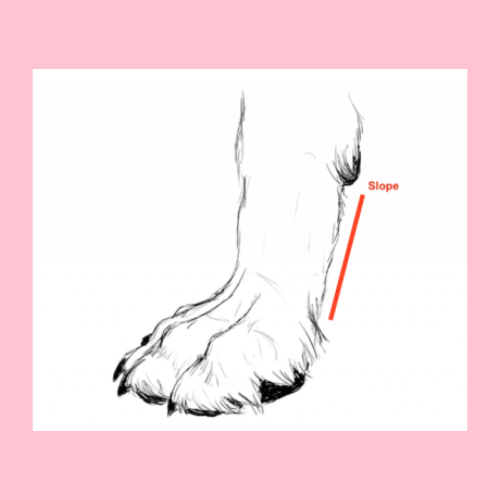Puppies are, without a doubt, the cutest living things on the planet. But they, too, can get sick with conditions like cradle cap. Cradle cap is a skin ailment that affects newborns and young puppies. Let’s discuss what exactly is the puppy cradle cap and how it manifests itself in puppies.
A cradle cap is scientifically known as seborrheic dermatitis. In this condition, puppies can suffer from itchy, inflamed, and scaly skin (that may or may not be painful).
Types of Puppy Cradle Caps
Two different kinds of puppy cradle cap afflict our canines:
- Dry puppy cradle caps
All dogs are susceptible to this condition. This type has scaly skin on the dog’s body and underarms. In most cases, the affected skin is itchy, red, and contaminated.

- Oily cradle caps
Oily cradle caps cause the skin of your pups to become greasy, stinky, itchy, irritated, and infectious.

Oil cradle caps can develop on any puppy as a secondary complication of another skin condition, such as an allergic response, thyroid issues, etc.
Puppy Cradle Cap Symptoms
Common signs of cradle cap in puppies include:
- Scaling or heavy crusts in specific areas of the scalp
- Oily/dry skin that is covered with thick scales that are either white or yellow.
- Thick scales can also be found on the ears, eyelashes, nose, and groin regions.
- Skin cracks
- Redness
How to Treat and Prevent Cradle Cap in Puppies
Cradle cap is a common ailment with no severe health risks, so do not be concerned if your puppy gets it. Cradle cap is caused by an overproduction of the oily substance sebum, which appears in scaly, flaky patches on the skin. It manifests itself most frequently on the scalp, although it can also show up on the cheeks, the ears, and the chest.
There are a few things that may be done to assist in getting rid of cradle cap, including the following:
- Brushing your puppy’s coat with a brush with soft bristles can help remove the accumulated flakes.
- You may use a gentle baby shampoo or a dog shampoo to clean your new puppy’s head. You should avoid using soap since it might make your pup’s skin even drier.
- Apply a very tiny amount of coconut oil/olive oil to the afflicted regions and massage it in gently until it is absorbed. Keep on for ten to fifteen minutes before removing entirely with water.
When Should Owners Be Concerned About Cradle Cap in Their Puppies?
Cradle caps may afflict both newborn and young pups. It manifests itself as a rash that is thick, greasy, and crusty on the scalp (as mentioned above). Cradle cap is not often a life-threatening ailment; nonetheless, it can be embarrassing for owners and painful for puppies. In certain instances, it may be an indication of a more serious underlying health concern.
- When exactly should you start to be concerned:
Cradle cap often manifests itself as a rash that is thick and greasy on the scalp. Because of this rash, the scalp may become dry and scaly. In certain instances, the loss of hair may also occur. It is possible that the rash will be followed by additional skin symptoms such as increased oiliness or flaking on other regions of the body.
If your puppy displays any of these signs, you need to take him to the veterinarian as soon as possible so that he may be diagnosed and treated.
How Can You Stop Newborn Puppies From Getting Cradle Cap?
Cradle cap is a common condition that affects newborn puppies, and there are several things you can do to help avoid it. The following steps can be taken to reduce the risk of cradle caps:
- At the very least, you should wash your dog once a week.
- Maintain a clean and dry environment for your puppy’s ears at all times.
- You should give the puppy’s head a bath using gentle dog shampoo every day.
- After you have ensured that the shampoo has been removed from the ears of the puppy, pat it dry with a towel or another comfortable fabric.
- Pasterns on a Dog [Explained]
- My AC Broke Will my Dog be Ok? [Full-Guide]
- Will My Dog’s Hair Grow Back After Scabs? [Full Guide]
Conclusion
If this is your first time taking care of a pet, you may be concerned about the possibility of the cradle cap developing on your new dog. Cradle cap disorder can affect puppies just like it can affect human babies. A cradle cap is identified by rough, flaky skin on the scalp.
While it does not cause any injury, it may be unpleasant and painful in some severe cases. There are a few things that you can do to help avoid cradle cap in your puppy or cure it if it already exists. To begin, you must ensure you frequently brush and clean your canine companion’s skin and fur.
A cradle cap can be caused by an accumulation of oils and grime, both of which will be removed if you follow these steps. You may also use a gentle shampoo that is developed for sensitive skin to assist in maintaining a clean and moisturized environment in that region. If the issue continues or appears to be serious, you should consult your veterinarian about various treatment options that may be available.

Doctor of Veterinary Medicine (D.V.M.) at Nation Taiwan University,Master of Science (M.S.) in Biomedical Engineering at National Taiwan University of Science and Technology




